Unmotivated uncontrolled and panic fear ... When the protective instinct of self -preservation turns into an obsessive and pathological state with an inadequate reaction, we are talking about the development of phobia.
Content
Someone is panicky afraid of snakes or spiders, and someone is horrified by the touch of a butterfly, someone does not endure the closed space or the accumulation of people, and someone is afraid of vampires and blood ...
Phobias can arise to any object or action, they significantly complicate life and do not give a person rest. It is important to determine the presence of pathology in time and contact a specialist, because treatment today is quite effective and justified.
What are the phobias? What are these or other phobias called? How to deal with phobias? An interesting selection of material in this article.
Phobia and fear, concepts and differences
Fears and phobias should not be confused, in some way they are similar, but, at the same time, they have a lot of differences.
- Fear is a protective mechanism of human self -preservation. This feeling warns of a possible danger, helping to mobilize the body's protective functions and correctly respond in the right situation.
- Fear acquires its outlines along with the accumulation of life experience. After all, the one -year -old baby is absolutely not afraid to fall from a height, and an adult understands all the risks and consequences. This reaction of the human body is absolutely normal and necessary for successful survival. Fear has a temporary component and is perfectly exposed to reason and logic.

- If, for example, a person after an experienced car accident is afraid to drive a car, this is a completely explained phenomenon. Often this condition passes over time or a person, in need of such transport, nevertheless “forces himself” to control emotions, overcoming his fears.
- When fear becomes far -fetched and uncontrolled, we should talk about the so -called phobia. At the same time, the reaction to the object of fear is absolutely inadequate and unpredictable: emotions get out of control, breathing is difficult, dizziness begins, etc.

- Understanding all the illogicality and, sometimes the absurdity of the situation, the body's reaction is not subject to human control, so it is almost impossible to cope with phobias independently.
- Phobia - fear, in fact, is an obsessive irrational fear and is considered a pathological phenomenon.
- Phobias are caused by continuous troubles and discomfort. The increased fear of something or anyone significantly complicates life, spoils the relationship with others, underestimates self-esteem and, sometimes, makes a person lonely. Having left alone with an obsessive problem, it becomes much more difficult to cope with it.
- The list of phobias existing in the world is impressive with volumes and diversity. In the center of paralyzing fear, there may be an object, action or situation. Someone is afraid of spiders, closed space, and someone clowns or people around them.
- Psychiatrists include panic phobias to obsessive painful states, followed by disorder of the psyche. This means that phobias need to be treated, the disease must be dealt with.
- You can try to live with your obsessive fears, protecting yourself from clashes with their source, but at the same time be prepared for a change in the quality of life is far from the best. Modern psychiatry and psychology allows you to safely get rid of phobias, having forever forgotten about unpleasant experiences.

Types of phobias
More than 300 forms of phobias have been recorded in the world. Moreover, experts classify such disorders in different ways, taking various parameters and signs as a basis.
Classification of the Carvasarsky psychiatrist, compiled on a plot of fear, distinguishes 8 groups of phobias:
- Fear of space.
The group includes the fear of closed space (claustrophobia) and open space (agorathobia). People suffering from claustrophobia are afraid of tight and closed rooms, for example, an elevator, aircraft, a small room without windows, etc. Most often, such violations are found in people who have survived the rubble stuck in the elevator, etc. The greatest risk of development in people whose professional activities are associated with similar phenomena (among miners, submariners).

- Fear of society (sociophobia).
A group of panic fears associated with public life. This can be a strong fear of public speeches, fear of certain actions in the presence of people (for example, get out of the table by need) or the phobia loss of a loved one.
- Fear of getting sick (nosophobia).
A group of fears associated with the possibility of getting sick. Particularly acute phobias are manifested during the period of epidemics or injection of rumors about their distribution.
- Fear of death (tanatophobia).
It includes unconscious and obsessive fears of death.

- Fear of sexual relations.
The group combines panic fears associated with any kind of sexual manifestations. For example, coythophobia means a fear of sexual intercourse, is characteristic of more than the female half of humanity.
- Fear of harm.
A group of fears associated with constant fear of harm to themselves, relatives and surrounding people.
- Contrast phobias.
A group of unusual fears that have a contrasting "color". For example, a well-mannered and cultural person is afraid to do something obscene and “terrible”, in his understanding, in front of the whole public.
- Fear of feeling of fear (phobophobia).
Paradoxically, there is a group of phobias based on fear of manifestation of fear of this feeling. In other words, a person is afraid of a sense of fear.

Another classification of phobias is somewhat simpler, and distinguishes types of fears in age categories:
- Children's phobias (for example, sociophobia).
- Teenage phobias (for example, nosophobia, intimophobia).
- Adult phobias (for example, obsessive fear for children).

The next classification systematizes the most common phobias and distinguishes 5 main groups:
- Panic attacks.
It is characterized by rapidly occurring vegetative disorders, manifested in a lack of oxygen, rapid heartbeat, excessive sweating, dizziness, etc. As a rule, attacks are associated with the fear of death, fear of losing consciousness, etc.
- Specific phobias.
This group of phobias is also called “isolated”, since they are associated with some specific restrictions. It can be fear of heights, insects, dogs, blood, etc.

- Hypochondric phobias.
Phobias associated with the ability to get sick with a terrible disease: AIDS, cancer, stroke, tuberculosis, etc. People begin to actively visit doctors, require examinations and various tests.
- Social phobias.
Fears associated with society, fear of condemnation or negative assessment from the outside. Often a person is afraid to find himself in the spotlight, tries to avoid public events. Social phobias can reach the “extremes”, when a person is afraid to go out, does not take pore eyes, not to mention conversations with strangers. You should not confuse intrusive fears with ordinary shyness or characteristics of character.
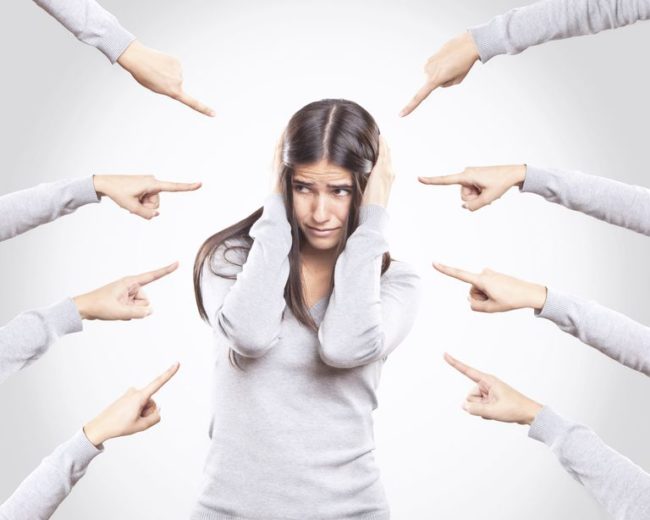
- Agorathobia.
Fear of open space (including open doors) and similar conditions. The group includes claustrophobia, fear of metro or transport, fear of a large accumulation of people, etc. Extreme disorders of the psyche can bring a person to a pathological fear of crossing a deserted street or square. Sometimes, a person suffering from a similar form of phobia can be in his apartment for a long time, afraid to go outside.

List of phobias
According to the analysis, the predisposition to the appearance of phobias are primarily impressionable, emotional or easilylated people. It is no accident that most phobias have a psychological background.
The names of phobias are directly related to the object (action, situation) of unmotivated fear.
Consider the list of the most common and, conversely, unusual phobias:
- Aquaphobia -fear of water, including fear of swimming or swim.
- Algophobia - Fear of pain (often observed in people who have experienced strong pain).
- Anthropophobia - The fear of people (phobia leads to the most severe mental consequences).
- Apiphobia -fear of the Bee family: bees, bumblebees, wasp.
- Arachnophobia -the fear of spider -shaped insects (sometimes the phobia of spiders manifests itself even at the sight of spiders in the picture).
- Ataxiophobia -fear of disorder and chaos.
- Athechifobia -fear of failures (phobia contributes to the underestimation of self -esteem, uncertainty; leads to depression and mental disorders).
- Aerophobia- Fear of air travel, fear of plane crashes and heights.
- Barophobia -fear of earthly attraction, lifting weights.
- Ballistophobia -fear of any throwing objects, missiles.
- Batheophobia -fear of height and depth.
- Bacillophobia-Fear of infection with any infectious disease.
- Gaptophobia- Fear of touch and bodily contact (sometimes phobia applies only to representatives of the opposite sex).
- Heliophobia -the fear associated with the sun.
- Hemophobia -panic fear of blood, the possibility of losing consciousness at the sight of blood.
- Gerontophobia- Fear of growing up, fear of communication with older people.
- Decidophobia -fear of decision making (often fears develop after unsuccessfully made decisions that have entailed serious unpleasant consequences).
- Zoophobia -fear of any animal (for example, a dog).
- Insectophobia - The phobia of insects (there are many varieties: signophobia - a fear of stinging insects, isopterophobia - fear of termites, Mirmeecophobia - fear of ants, etc.).
- Carcinophobia - Fear of getting on an oncological disease. A person is pursued by panic attacks, headaches and constant anxiety.
- Kleptophobia -fear of thieves, fear of being robbed.
- Computerophobia- Fear of computer technology.
- Cowlrophobia -the phobia of clowns (often fear causes not only a “living” clown, but also figurines, pictures with the image of clowns).
- Neophobia -fear of change (distinguishes varieties: technophobia, futurophobia, ergiagophobia, gnoshyophobia).
- Nobody -the phobia of the darkness, nights and unlit premises (is considered one of the most common phobias inherent in 10% of the country's population).
- Odontiatophobia-The unusual name for the fear of a dentist.
- Oredophobia -fear of reptiles (snakes).
- Panophobia -the fear of any troubles and the expectation of something bad (more often develops in people with a rich imagination).
- Pedophobia- phobia of children, the birth of a child (manifests itself in different variations, including in relation to their own children).
- Pyrophobia -fear of fire and fire.
- Sophobia -fear of the study process (a variety of phobia is gnoshyophobia - a fear of knowledge).
- Talassophobia- Fear of the sea, ocean, fear of sea travels.
- Toxicophobia- Fear of poisoning.
- Tripanophobia -fear of injections.
- Tripophobia- phobia of holes, small holes and cluster formations (watering can, accumulation of acne, bubbles).
- Ergophobia -phobia work and the implementation of any targeted actions.
- Emetophobia - fear of vomiting reflex, vomiting.
- Faxophobia -fear of taking drugs.

In fact, this is far from the entire list of phobias existing in the world. In addition, there are rare and sometimes "eccentric" panic fears. For example, the fear of vampires, otherworldly forces, the number “13”, etc.
Such a variety of fears is confirmed by the fact that, in principle, any object or action can cause such a pathological state.

Signs and symptoms of phobia manifestation
People suffering from any phobias try to avoid objects or situations that provoke fear and panic as much as possible.
Panic, uncontrolled and, often, animal horror caused by certain objects or action, has not only a psychological basis, but is also characterized by physical symptoms. Phobi -dependent people have to experience a real attack of the disease, characterized by a number of signs and symptoms:
- Charp heartbeat.
- Spasmic attacks in the area of \u200b\u200bthe throat, suffocation and lack of air, difficulty breathing.
- Weakness in the legs and throughout the body, numbness and loss of control over the body.
- Strong sweating.
- Hysteria, cramps.
- Redness or pale of the skin.
- Dizziness, loss of consciousness is possible.
- Trembling and feeling of incredible horror.
- Nausea, stomach disorder, abdominal pain, vomiting.
- Compulsive behavior, i.e. Performing obsessive monotonous movements or actions.
- The uncontrolled growth of fear, increasingly increasing with the imagination of man.
Experts note that the presence of at least 4 signs from the list presented indicates the presence or development of phobia.
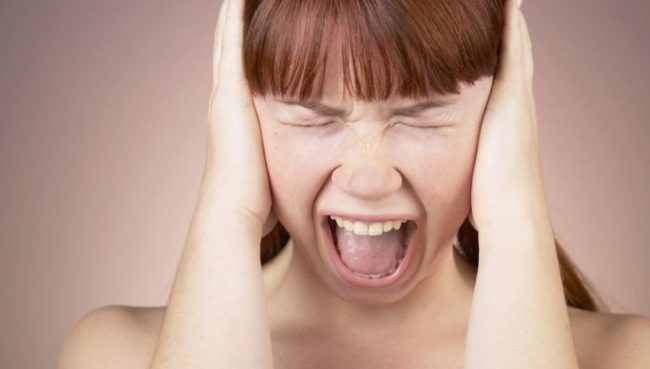
The causes of phobias
The mechanism of the appearance of phobias is currently not fully studied, however, there are certain risk factors and the predisposition of some categories of people to their development.
The causes of panic and uncontrolled fears vary, depending on the type of phobia and the object of fear. One thing often unites them - experienced negative emotions.
Consider the most common and scientifically sound causes of most phobias.
1. Genetics:
- Many scientists believe that a predisposition to phobias in many people is laid down at the genetic level. Fear can be transmitted not only to the genetic memory of far -goed generations, but also from parents.
- So, for example, the cause of the occurrence of no one is called genetic memory, where from generation in generation the dark time was associated with a possible danger (the attack of predators, warring tribes T.D.). The second probability of phobia manifestation is the transfer of such fears from parents to children, and in percentage it is about 80%.
- In addition, frequent anxieties and constant experiences of relatives and friends only enhance the development of phobias.

2. Children's fears:
- As you know, children's fears are the most persistent and memorable. And if the child is constantly intimidated, fears can acquire a neurasthenic nature.
- So that the child obey, they can scare him with spiders or other unpleasant “characters”, after which, even with age, phobias do not disappear, and in the presence of favorable factors, on the contrary, exacerbate.
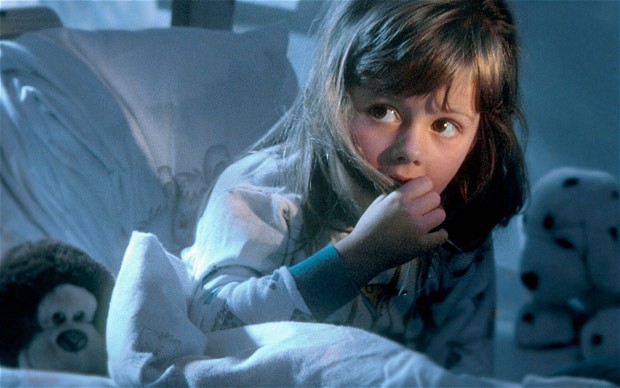
3. Hyper of custody:
- Excessive parental care can cause a child to develop self -doubt, infantility. The emotional instability and isolation of such children will be an additional factor in the possible development of phobias.
4. Rich imagination:
- Imagination, as such, is actually not the reason for the development of fears. The ability to fantasize is considered in the aspect of an auxiliary factor that contributes to the emergence of phobias. The relationship of “speculation” and fear with the emotional instability of a person is especially clearly visible.
- So, for example, the phobia of clowns began to spread after entering the screen of films-Uzhasas with the participation of these characters. Furious and sensitive children's psyche perceived “people in masks” as a real danger and a threat to life, dopantizing and specifying even more negative moments.

5. Stress, violence:
- Stress and depression, conflicts and problems are direct response in the formation of irrational fears. The experienced violence often becomes an impetus for the formation of stable phobias.
- An unstable psychological state, psychological stress often leads to the creation of imaginary danger and the formation of phobias.
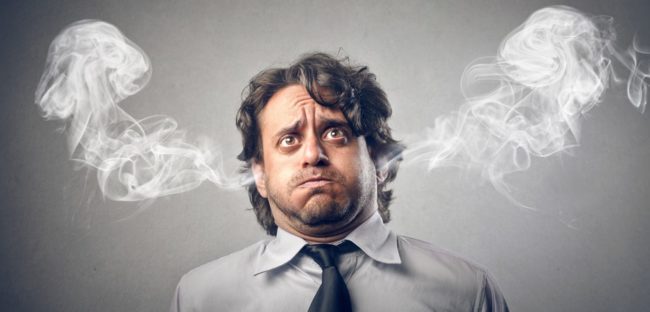
6. Fear of death
- Scientists associate the emergence of many phobias with the pathological fear of death.
- At the same time, getting rid of Tanathophobia (fear of death), it is possible to quickly “forget” about the rest of the forms of phobias.
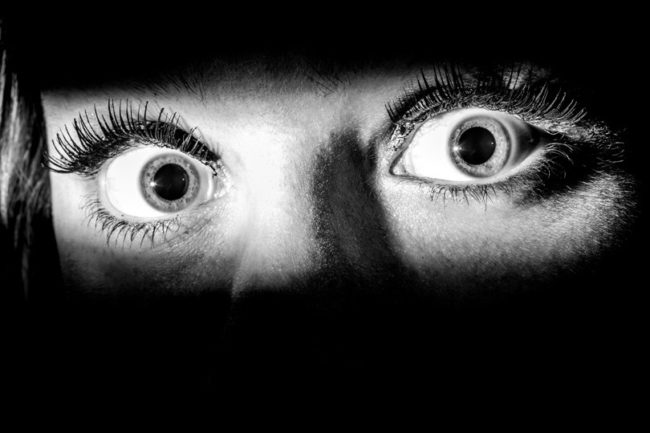
Specialists in the field of psychiatry note the age and gender factors of the manifestation of phobias. So, in most cases, fears have a good nature and continue (if they do not treat them) up to a maximum of 50 years. In old age, phobias "outlive" themselves.
As for the gender factor, they are more susceptible to the phobias of women (in 65% of cases) than men.
Treatment of phobias
How to get rid of obsessive, spoiling life, phobia?
Psychotherapists and psychologists are the main healers of such “phobias - diseases”. Before treating fears, it is important to accurately diagnose them. For this, there are special methods and tests, the results of which indicate a certain phobic symptoms.

It is possible to independently cope with the problem of uncontrolled fears in rare cases. As a rule, only specialists will be able to provide real and qualified assistance.
There are many methods that allow you to get rid of obsessive states. Depending on the severity of the disease, neglect and personal characteristics of a person, the duration of treatment is completely different: from 5 to 20 or more sessions.
The main methods of treating phobias include:
- Hypnosis (according to Erickson).
- Psychoanalysis.
- Behavioral therapy (immersion in a real phobic environment).
- Art Therapy.
- Cognitive - behavioral therapy (rethinking the problem and monitoring the situation).
- Gestalt therapy.
- Auto -training.
- Relaxation.
- Systematic desensitization (associative connection of objects of fear with relaxation).
Proper and timely treatment allows you to get rid of undesirable and obsessive fears forever.
Drug (psychotropic) drugs when working with phobias are not effective and can lead to addiction. In this regard, drug treatment is prescribed in exceptional cases (in acute panic attacks, attacks), when funds justify possible negative consequences.
It is necessary to treat phobias, because they “spoil” life not only in a figurative, but also a literal sense. The experience of stressful situations threatens to reduce immunity and deteriorate human health.
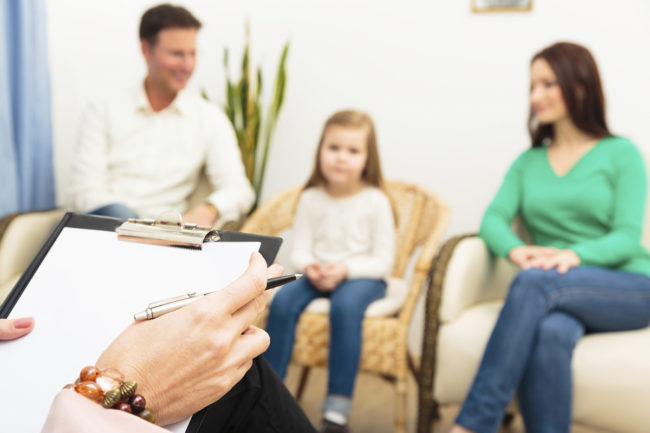
Thus, phobias have a destructive effect on a person’s life and his environment, which means they need mandatory treatment. If a dependent person does not manage to cope with an obsessive and pathological problem on his own, it is necessary to contact a psychologist or psychotherapist.
In any case, you should not be afraid of the emotions of fear, as such, otherwise the development of phobophobia, fear of phobias ...










Comments
a couple of years ago, there was no side of metrogils from the same problem, there were no side effects ...
I’m not a fan of peeling at all, it saves from acne of metrogil, it also smoothes it ...
Great article! ...
I take the second course of the Capsules Climafite 911. The tides went very quickly. It became calmer, irritability went away and I sleep well ...
i also noticed - it is worth nervous, everything immediately affects the face. Therefore, I try to avoid conflicts and unpleasant people. Of the creams, I like Miaflow from wrinkles - smoothes not only small wrinkles ...